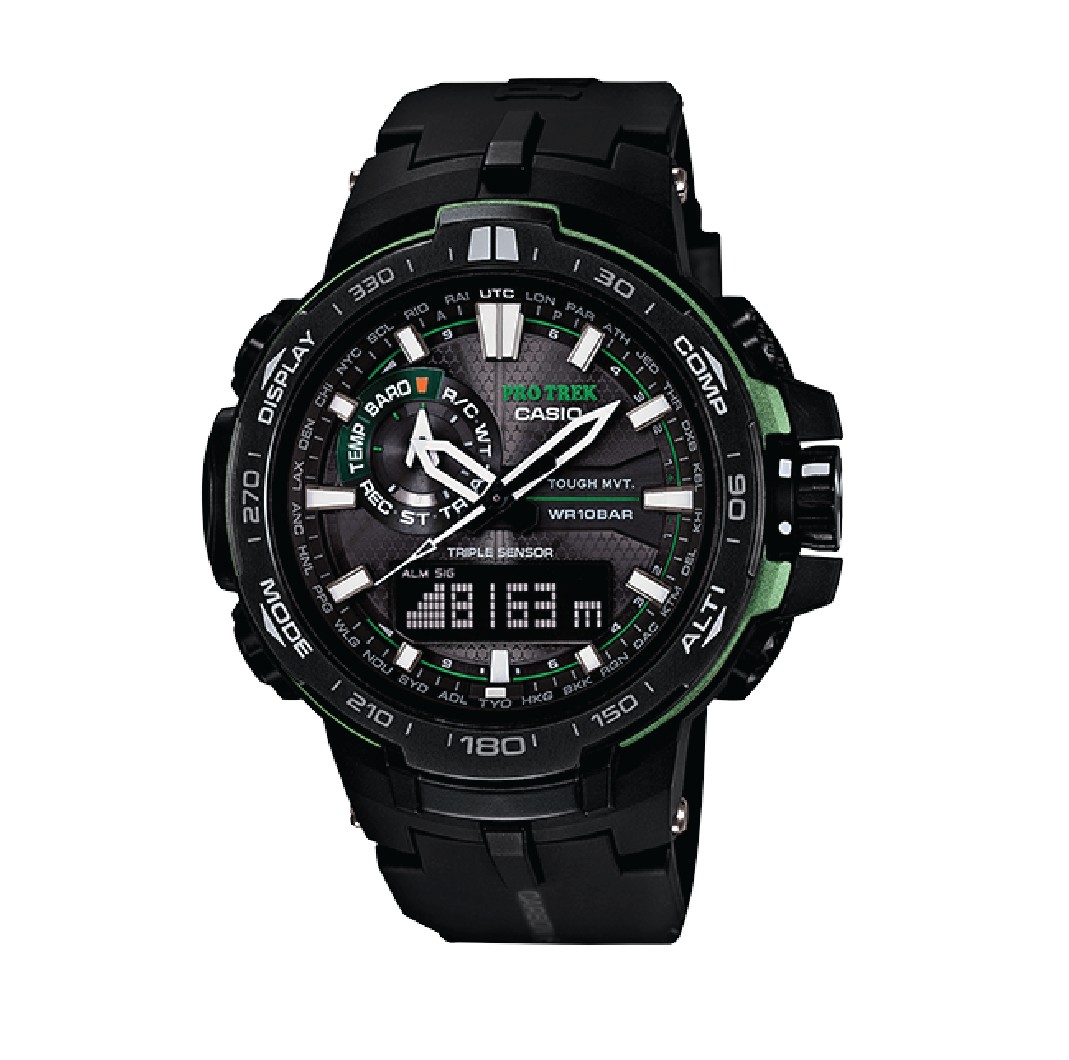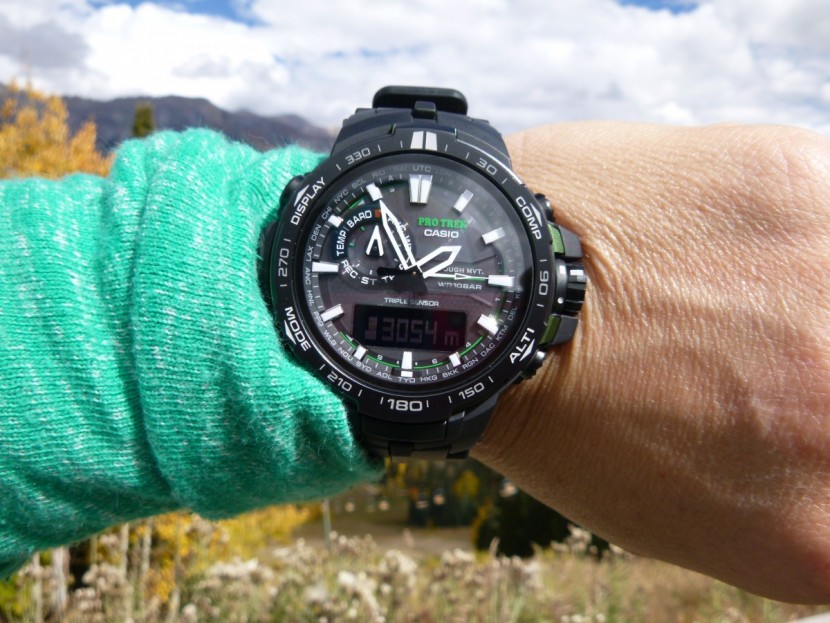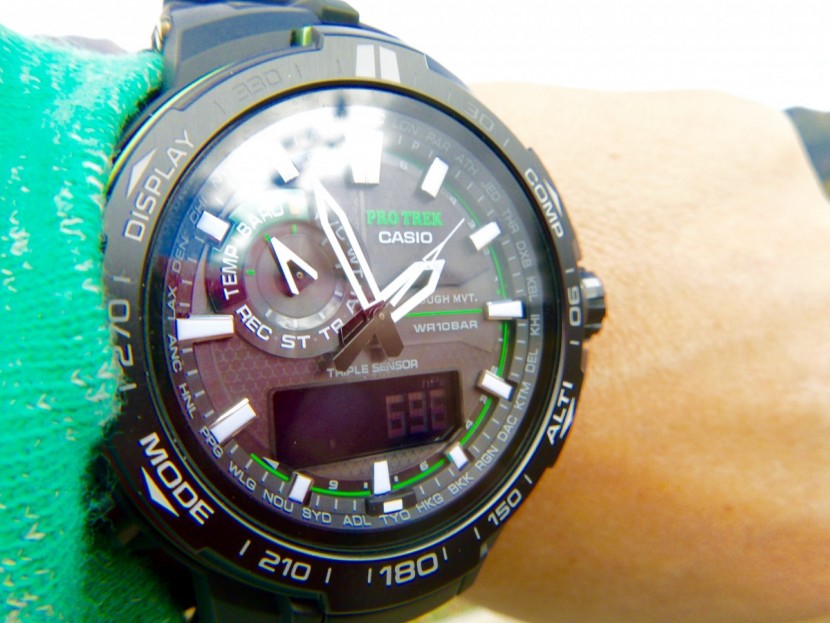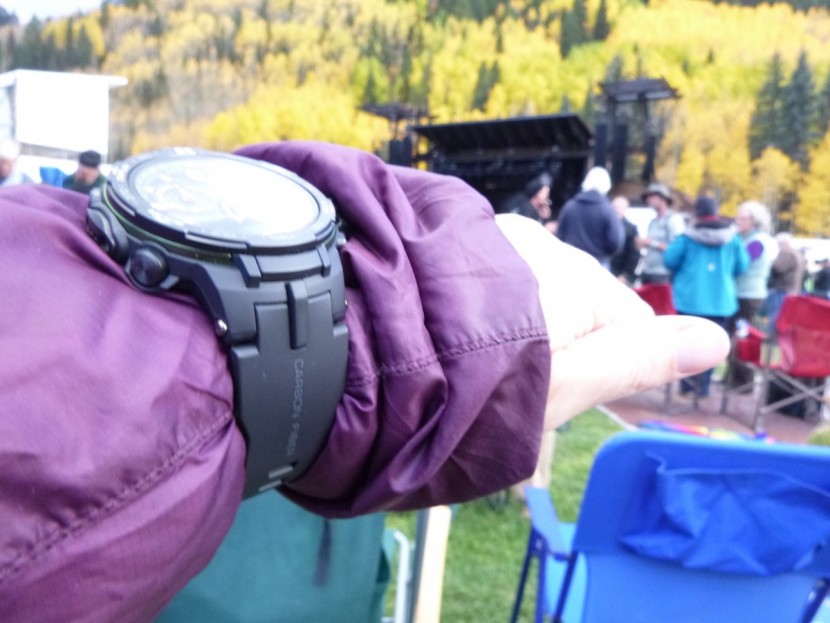Casio PRW-6000Y Review
Our Verdict
Our Analysis and Test Results
The PRW-6000Y has a built-in solar panel and simple functions. It's reliable and perfect for extended missions.
Altimeter Accuracy
After walking, running, and hiking over 10,000 feet of vertical terrain, we learned that this was one of the most accurate watches that we tested. It was never more than 100 feet off the actual altitude (with calibrations). In the world of altimeter watches, this is incredibly accurate.
The only time it lost its accuracy was when we didn't calibrate it properly before a trip, or when the weather changed drastically (which is also typical of altimeter watches). In general, you can rely on the altimeter readings with this Casio. That said, it didn't score super high in this metric because the increments are 1m/5 ft. Most high-end altimeter watches like the Suunto Traverse have an altimeter increment of 1m/3ft.
Battery Life
Earning top marks in this category, this solar-powered Casio is among the longest-lasting watches tested (along with some of its other Casio companions). You won't have to worry about running out of juice on the trail — even if you are gone for months.
Throughout our three-month testing period, we didn't have to formally charge it once. Depending on the type of light used to charge (i.e., direct sunlight, indirect sunlight, or fluorescent lights), this solar-powered watch can take anywhere from just three to six hours to charge from a dead battery. For those in search of a watch that won't lose battery life during an adventure that lasts more than a week, this is your best option. Taking a simple walk outdoors will keep it charged and ready to go.
User Experience
Of all the watches tested, this was one of the most difficult to figure out. We couldn't even figure out how to set the time, look at a barometric reading, or determine the altitude without reviewing the user's manual. This watch has the steepest learning curve, but once we figured it out, it was easy to use. If you're looking for an easier-to-use option, check out the Suunto 9 Baro.
The liquid crystal display is durable, clear, and crisp. We love that there is little to no reflection, regardless of the light. That said, the watch face isn't as large as the other watches tested and the box that provides a digital readout of altitude, pressure, and other features is tiny.
The LCD light is also pretty poor. It doesn't last long enough or provides a lot of light to see the entire face of the watch during the night (only one and three-second options). If you're looking for a watch with incredible display quality, check out the Garmin Fenix 5x Plus Sapphire or Suunto 9 Baro.
Features
The PRW-6000Y is a quality watch that offers some great features. However, they are a little more basic than other watches that we tested, and there aren't nearly as many as comparably priced models like the Suunto 9 Baro. That said, it does perform the basic functions of any quality altimeter watch. It has a good altimeter-barometer, compass, temperature gauge, timekeeper, and data log.
Altimeter and Barometer
The alti-barometer allows you to view your altitude and the barometric pressure for your current location. You can record logs of any uphill (or downhill) activity, and determine an altitude differential between two areas. It automatically logs your maximum and minimum altitude, while data recall allows you to see up to 30 logs that you have saved. The barometer can be used to track weather trends and turn on storm alerts for severe changes in barometric pressure. It has poor graphs for both barometric pressure and altitude. They are small, hard to see and don't contain a whole lot of information. The trend line is also extremely short. Even though it still allows you to track trends in altitude and pressure, the graphs featured in other battery-powered watches like the Suunto Core Alu are much better.
Compass
The compass on this watch is functional but fairly archaic in comparison to the rest of the watches tested. It allows you to take a current bearing to determine where you need to go (with the use of a topographical map).
Time Keeper
This watch features an atomic, radio controlled watch with both a digital and analog display. It has a world clock, complete with 29 different time zones, five alarms, a stopwatch, and countdown function. The world clock is helpful to have. However, a GPS-enabled watch that can update the time automatically is more convenient when traveling.
Comfort and Fit
This watch stands out for its ergonomic fit and lightweight. It often feels like you weren't wearing anything at all.
We also love its durable carbon-fiber wrist strap that is bound to last a long, long time. When comparing it to our top contender, the Suunto Ambit3 Peak, we noticed that this watch is lighter, with a slimmer profile. However, we liked the Ambit3 Peak better because of its longer straps (that fit better over layers) and thicker strap material. Several Suunto watches are even more comfortable though, as is the Garmin Fenix 5x Plus Sapphire.
Value
This watch doesn't have a whole lot of value. It comes with a super high price and not a whole lot of features. However, it is highly durable. We love the built-in solar panel, but the features and ease of use of the watch don't match the price. Even though this piece of technology provides decent accuracy and simple features, it is fairly outdated in function performance and doesn't include any bells or whistles that other (less expensive) watches have.
Conclusion
This Casio is one of the most reliable watches tested in this review. The solar-powered functionality coupled with durable features makes it a perfect compadre for extended missions in remote territories. However, it lacks fancy features, and the price is high for what it provides.







